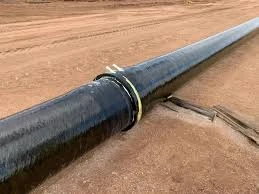
-
 Afrikaans
Afrikaans -
 Albanian
Albanian -
 Amharic
Amharic -
 Arabic
Arabic -
 Armenian
Armenian -
 Azerbaijani
Azerbaijani -
 Basque
Basque -
 Belarusian
Belarusian -
 Bengali
Bengali -
 Bosnian
Bosnian -
 Bulgarian
Bulgarian -
 Catalan
Catalan -
 Cebuano
Cebuano -
 China
China -
 China (Taiwan)
China (Taiwan) -
 Corsican
Corsican -
 Croatian
Croatian -
 Czech
Czech -
 Danish
Danish -
 Dutch
Dutch -
 English
English -
 Esperanto
Esperanto -
 Estonian
Estonian -
 Finnish
Finnish -
 French
French -
 Frisian
Frisian -
 Galician
Galician -
 Georgian
Georgian -
 German
German -
 Greek
Greek -
 Gujarati
Gujarati -
 Haitian Creole
Haitian Creole -
 hausa
hausa -
 hawaiian
hawaiian -
 Hebrew
Hebrew -
 Hindi
Hindi -
 Miao
Miao -
 Hungarian
Hungarian -
 Icelandic
Icelandic -
 igbo
igbo -
 Indonesian
Indonesian -
 irish
irish -
 Italian
Italian -
 Japanese
Japanese -
 Javanese
Javanese -
 Kannada
Kannada -
 kazakh
kazakh -
 Khmer
Khmer -
 Rwandese
Rwandese -
 Korean
Korean -
 Kurdish
Kurdish -
 Kyrgyz
Kyrgyz -
 Lao
Lao -
 Latin
Latin -
 Latvian
Latvian -
 Lithuanian
Lithuanian -
 Luxembourgish
Luxembourgish -
 Macedonian
Macedonian -
 Malgashi
Malgashi -
 Malay
Malay -
 Malayalam
Malayalam -
 Maltese
Maltese -
 Maori
Maori -
 Marathi
Marathi -
 Mongolian
Mongolian -
 Myanmar
Myanmar -
 Nepali
Nepali -
 Norwegian
Norwegian -
 Norwegian
Norwegian -
 Occitan
Occitan -
 Pashto
Pashto -
 Persian
Persian -
 Polish
Polish -
 Portuguese
Portuguese -
 Punjabi
Punjabi -
 Romanian
Romanian -
 Russian
Russian -
 Samoan
Samoan -
 Scottish Gaelic
Scottish Gaelic -
 Serbian
Serbian -
 Sesotho
Sesotho -
 Shona
Shona -
 Sindhi
Sindhi -
 Sinhala
Sinhala -
 Slovak
Slovak -
 Slovenian
Slovenian -
 Somali
Somali -
 Spanish
Spanish -
 Sundanese
Sundanese -
 Swahili
Swahili -
 Swedish
Swedish -
 Tagalog
Tagalog -
 Tajik
Tajik -
 Tamil
Tamil -
 Tatar
Tatar -
 Telugu
Telugu -
 Thai
Thai -
 Turkish
Turkish -
 Turkmen
Turkmen -
 Ukrainian
Ukrainian -
 Urdu
Urdu -
 Uighur
Uighur -
 Uzbek
Uzbek -
 Vietnamese
Vietnamese -
 Welsh
Welsh -
 Bantu
Bantu -
 Yiddish
Yiddish -
 Yoruba
Yoruba -
 Zulu
Zulu
FRP Chimney Design and Installation for Industrial Applications and Efficiency Improvement
FRP Chimney Construction and Installation for Industrial Applications
Fiberglass Reinforced Plastic (FRP) chimneys are rapidly becoming a preferred choice in various industrial applications due to their lightweight nature, durability, and corrosion resistance. These modern chimneys play a crucial role in efficiently exhausting flue gases and emissions, ensuring compliance with environmental regulations while improving the overall operational efficiency of industrial facilities.
Advantages of FRP Chimneys
1. Corrosion Resistance Traditional materials like steel and concrete are often susceptible to corrosion, especially in harsh industrial environments where exposure to chemicals, moisture, and extreme temperatures is common. FRP chimneys, on the other hand, are inherently resistant to corrosion, making them ideal for chemical plants, power generation facilities, and other industries where corrosive elements are present.
2. Lightweight Construction One of the most notable advantages of FRP chimneys is their lightweight nature. This characteristic allows for easier handling and installation, reducing the need for heavy machinery and labor costs. The reduced weight also minimizes the structural requirements for the supporting framework, further lowering construction costs.
3. Low Maintenance FRP materials require significantly less maintenance compared to traditional chimneys. Their resistance to rust and decay means that inspections can be less frequent, and repair costs are often lower, translating to long-term savings for facility operators.
4. Design Flexibility FRP can be molded into various shapes and sizes, allowing for customized chimney designs that meet specific industrial requirements. This flexibility makes it easier to integrate the chimney system with existing infrastructure and to accommodate particular site challenges.
Construction Process
The construction of an FRP chimney involves several key steps
frp chimney construction and installation for industrial and ...

1. Site Assessment Before any construction begins, a comprehensive site assessment is essential. This involves analyzing environmental conditions, the intended application, and integration with existing systems.
2. Design and Engineering Based on the site assessment, a detailed design is developed. Engineers take into account factors such as chimney height, diameter, and necessary emissions filtration systems to ensure optimal performance.
3. Material Selection High-quality FRP materials are selected based on strength, chemical resistance, and thermal properties. Different resin systems can be utilized depending on the specific environmental challenges of the application.
4. Fabrication The chimney components are fabricated using advanced techniques such as filament winding or resin transfer molding. This step involves creating the necessary sections of the chimney off-site, which accelerates the installation process once on-site.
5. Installation Installation involves assembling the pre-fabricated components and securing them in place. Proper anchoring and support systems are vital to ensure stability, especially in locations prone to high winds or seismic activity.
6. Post-Installation Inspection After installation, a thorough inspection is conducted to ensure all components are secure and functioning correctly. This process may also include pressure testing and system checks to verify emissions control efficiency.
Conclusion
As industrial sectors continue to focus on sustainability and efficiency, the adoption of FRP chimneys is set to rise. Their benefits of corrosion resistance, lightweight nature, low maintenance requirements, and design flexibility make them an appealing choice for modern industrial applications. With proper construction and installation processes, FRP chimneys not only enhance operational efficiency but also contribute to the overall reduction of environmental impacts, paving the way for a greener industrial future.









